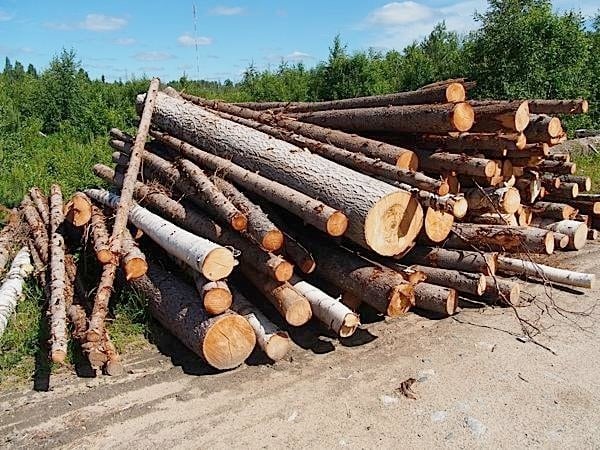Canada’s forestry industry is taking up some of the slack in Alberta’s job market, what with layoffs and declining revenues in the oil patch. The president of the Alberta Forest Products Association, Paul Whitaker, told CBC news that the upsurge in forestry has been going on for a couple of years now, with 10 per cent growth each year, and he expects it to continue. Meanwhile, the number of resumés crossing the desk of the human resources manager at one Alberta forest products company is up by 25–50 per cent per week.
Many who have found work in forestry are relieved to be out of the cyclical, somewhat unreliable oil and gas sector. The idea of working in a job where it’s not uncommon for workers to stay on the job for decades is appealing to many.
The industry is on a rebound across Canada, some calling it a “renaissance.” At the recent annual meeting of the Ontario Forestry Association in Toronto, an equity analyst at TD Securities said that there had been a “180 per cent shift” in the way investors regard forestry. Canadian equities in forestry are up 250 per cent since late 2011, Sean Steuart said.
We are the ultimate renewable resource. We harvest trees, we replant them, we harvest them again many years later. This is an industry that’s here for the long run. We know that we’ll be here 100 years from now.
Paul Whittaker, president, Alberta Forest Products Association
The lower Canadian dollar, increases in US housing starts and lower energy costs have come together to drive investor confidence in the sector, particularly lumber. Recent changes to the Ontario Building Code, which now allow builders to construction buildings up to six storeys high using wood-frame construction, will add to the demand for lumber.
The federal government has also taken notice, though not soon enough for some. Last week the office of the Minister of Natural Resources announced an investment of $20.6 million to support research into leading-edge technologies and processes that will improve the industry’s innovation and competitiveness.
However the opposition MP for Thunder Bay, Ontario, criticized the federal government for having neglected the industry over the past decade. Annual revenues in the sector have declined from $80 billion in 2005 to less than $54 billion in 2013, said MP John Rafferty. The number of jobs in the sector has declined by 112,000 in the same period. Rafferty said that the Natural Resources Committee of the House of Commons had committed to studying the forestry sector in the coming months.
In another development that could potentially make Canada’s forestry products more attractive to international markets, the Forest Products Association of Canada (FPAC) announced that 43 per cent of the country’s forestry products now come from independently certified sustainable forests. This is more than in any other country in the world. Sustainable forest management practices mean that harvests are sustainable, regeneration of the land is prompt, and biodiversity is protected. Canadian companies can certify to one of three standards: Forest Stewardship Council (FSC); Sustainable Forestry Initiative (SFI) and Canadian Standards Association (CSA).


































